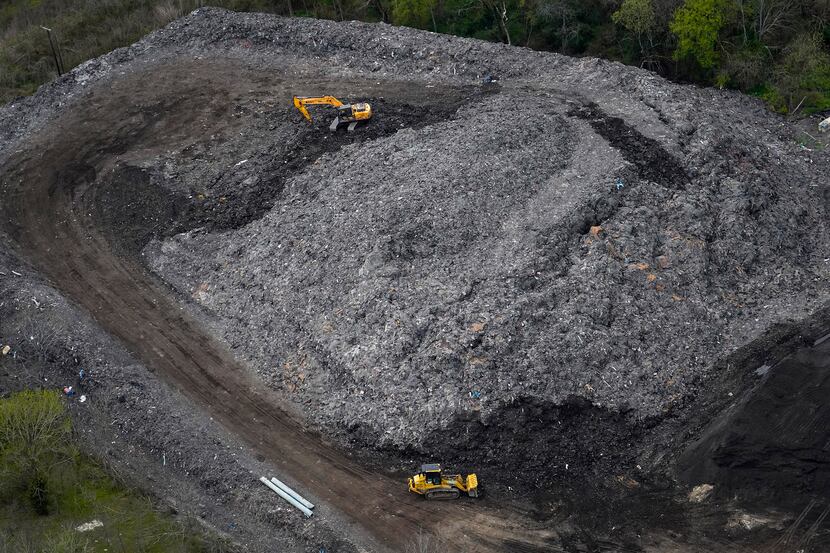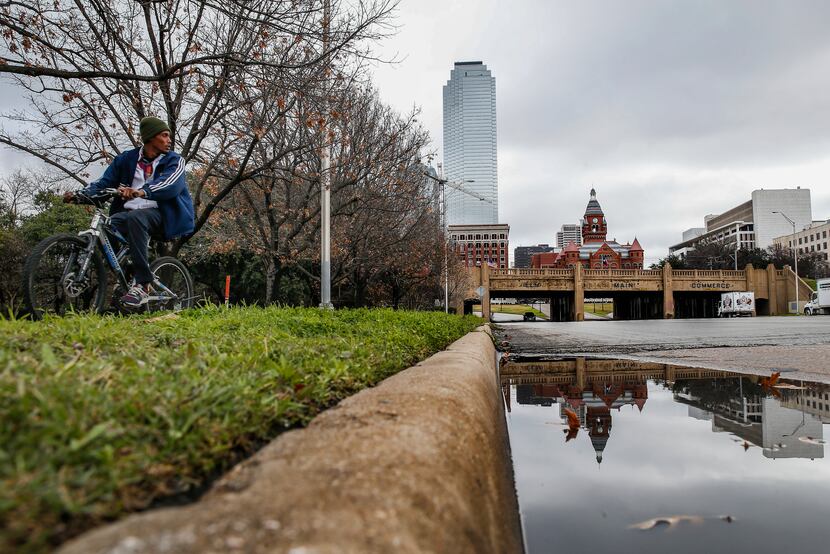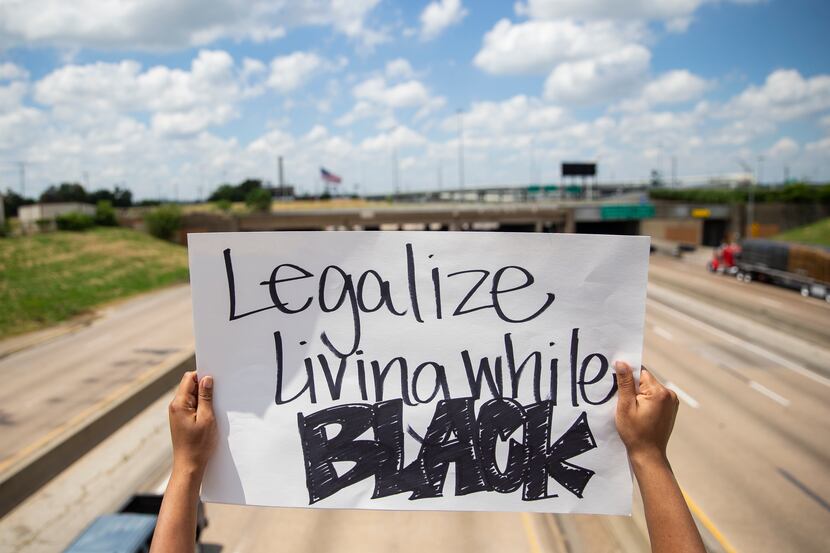You will excuse me if I am tired, not to mention dubious, of the endless stream of messages from corporate and civic leaders proclaiming that they “are listening” and that “we need to do better” in the wake of the protests that have swept the country. The streets are flooded because people, and people of color especially, are tired of waiting.
Active reform can begin with the frank admission that, like the use of police force, the design of the city has been an instrumental means for controlling black and brown bodies. That is a fact of American urban history and the harshness of that reality is especially glaring in Dallas, which is so physically divided between its wealthy white (mostly northern) communities and its far less affluent (mostly southern) minority communities.
This development was no accident; white supremacy was built into the planning texts of the city. In 1926, for instance, the Kessler Plan Association, which guided the City Beautiful development of the city, stated emphatically that “whites who have bought homes are entitled to protection from encroachment of negroes moving into the neighborhood.”
Land set aside for African Americans was considered undesirable: in the Trinity flood plain, adjacent to industrial uses.
Then came the highways — the R.L. Thornton Freeway, Central Expressway, Interstate 30, the Dallas North Tollway — which plowed through those minority neighborhoods for the convenience of the region’s white commuter population.
The city’s spatial division by race translates directly into health and well-being. According to a UT Southwestern study of data from 2005-2014, life span in the largely African American ZIP code of 75216 is 70.5. In the Park Cities, it is over 86. And that was before COVID-19, which has hit African American communities in vastly disproportionate numbers.

The point here isn’t to fully explore the prejudicial history of Dallas urban development, because that is a book-length project (and it would be a big book). Admitting to the sins of the past does not redress those sins. But there are a number of immediate steps that the city can take to become a more equitable place.
A first order of business should be the reinstatement of the city’s dormant Environmental Health Commission. There is much for that commission to do. An April 2020 study by Paul Quinn College, “Poisoned by Zip Code,” found air pollution at dramatically higher levels in minority communities in the southern sectors of the city.
The dismantling of the notorious Shingle Mountain dump along the South Central Expressway would be a good first action item. But the commission should also be setting new rules and standards that include far more widespread monitoring of air quality, caps on pollution levels by ZIP code, mandating physical barriers between pollution sources and residential communities, and expanding the distance of notification, currently just 200 feet, when there are proposed changes in permitting or zoning, so that communities can properly respond.

The City Council might also retake the tabled discussion of rent and evictions during the economic crisis of the pandemic. Now is not the time to be forcing people out of their homes. It is, for that matter, time to be developing more low-income and permanent supportive housing that is convenient to downtown and to public transit. Making that transit more accessible should be another immediate goal. Instead of the prodigiously wasteful Cotton Belt project — linking the northern suburbs to the airport — DART should invest in the downtown expansion of its rail lines and the expansion of bus service.
Fast-tracking the removal of Interstate 345 is another imperative project. The roadway, which separates the historic African American community of Deep Ellum from downtown, is now well past its life span. Studies indicate that it can be replaced with, at worst, minimal disruption to commuter times. The benefits, however, are enormous: a transformative suturing of the city and the potential to vastly increase the city’s stock of affordable housing within walking distance of downtown.
While attention has been focused, over the past few weeks, on a foolish proposal to develop the land beneath that highway into soccer fields, not a peep has been mentioned about the North Central Texas Council of Governments’ refusal to fund a lighting project along Routh Street under the Woodall Rodgers Freeway. The purpose of the project is to provide a safe environment for students walking beneath the highway overpass to the minority-majority Booker T. Washington High School for the Performing and Visual Arts.
That is a relatively small project, but it is a symbolic one, and symbols matter. The initiative to remove the Confederate memorial in Pioneer Park is a positive step in this direction. Conversely, on July 31 the city will select an artist for a memorial to victims of lynching to be placed in Martyrs Park, between Dealey Plaza and the entry to Interstate 35. The $100,000 the city has put toward this project is woefully small considering its import, and the site of Martyrs Park, an isolated bit of junkspace, essentially an insult.

As I have noted in previous columns, this park should be expanded and linked to the Kennedy assassination site in a wider memorial park dedicated to political violence. But even that should be part of a broader program, recognizing and safeguarding sites of African American history, for example the corner of Main and Commerce, where Allen Brooks was lynched in 1910, and the Historic Tenth Street neighborhood, which has been subject to wanton demolition of allegedly neglected buildings by the city.
In an eloquent and heartfelt public letter written in response to the protests, Nasher Sculpture Center director Jeremy Strick wrote that museums, “cannot be separated from, and indeed derive benefit from the same social structures that have used institutionalized violence against people of color as the tip of their spear. While over the years the Nasher has taken measures to increase diversity, equity and inclusion, we have not done enough.”
Here’s a suggestion for the Nasher. Tear down your walls. Tear down, or at least substantially open up, the concrete walls that surround your garden. The Dallas Museum of Art keeps its sculpture garden open to the public. In the years since your wall was erected, the city has dramatically reoriented toward what is now Klyde Warren Park, a democratic space where all the city gathers.
The status quo is no longer acceptable, not at the Nasher, and not in Dallas.

